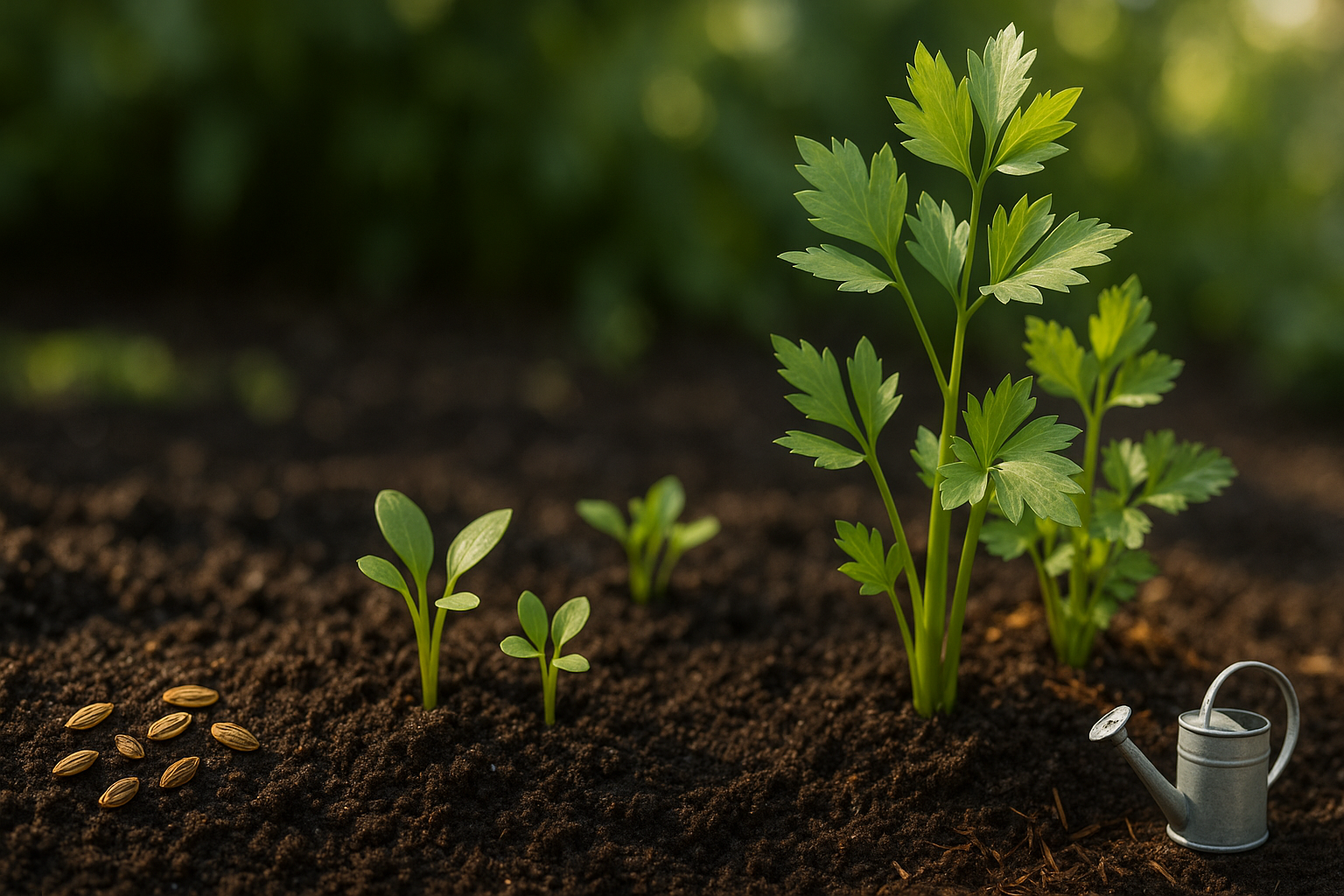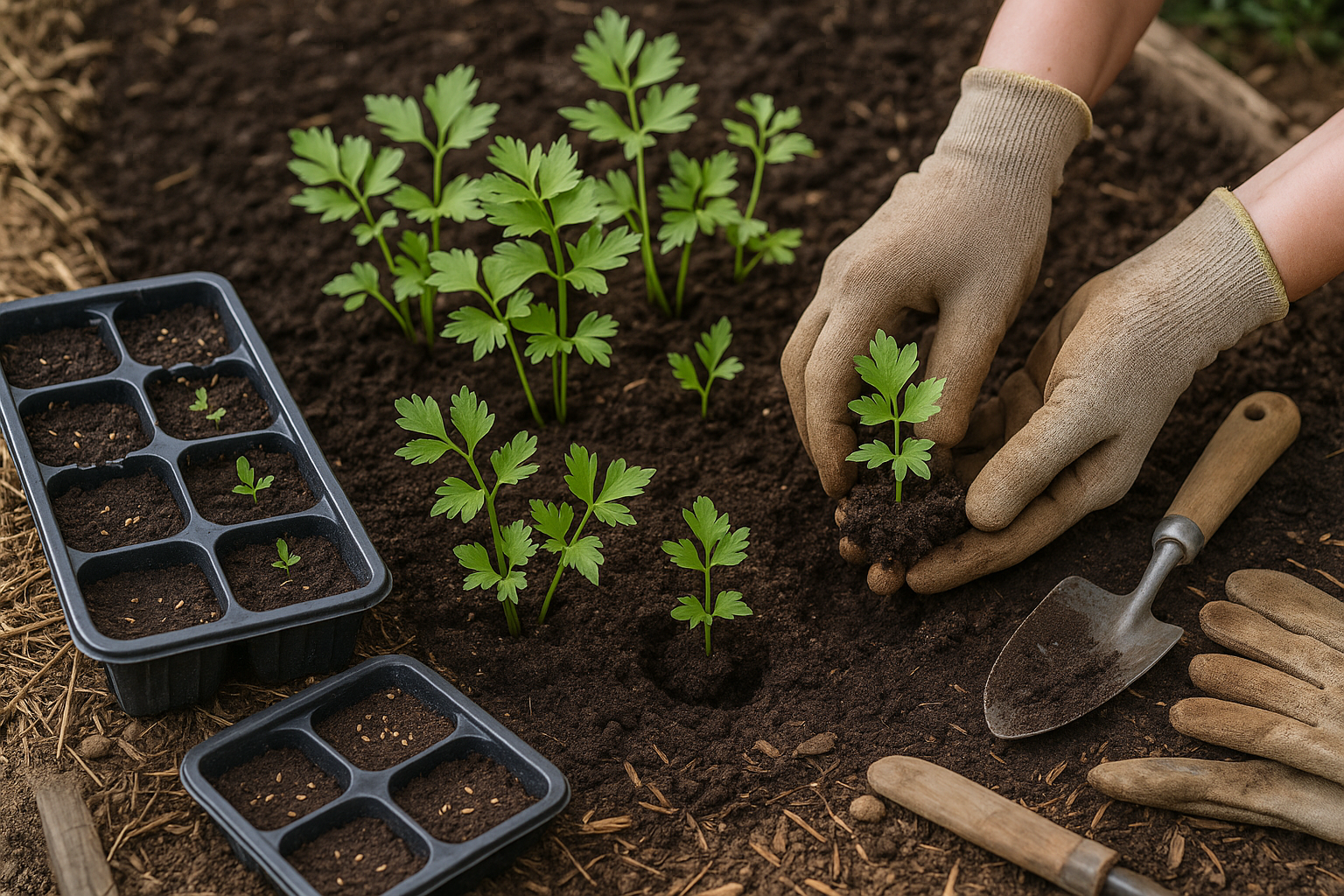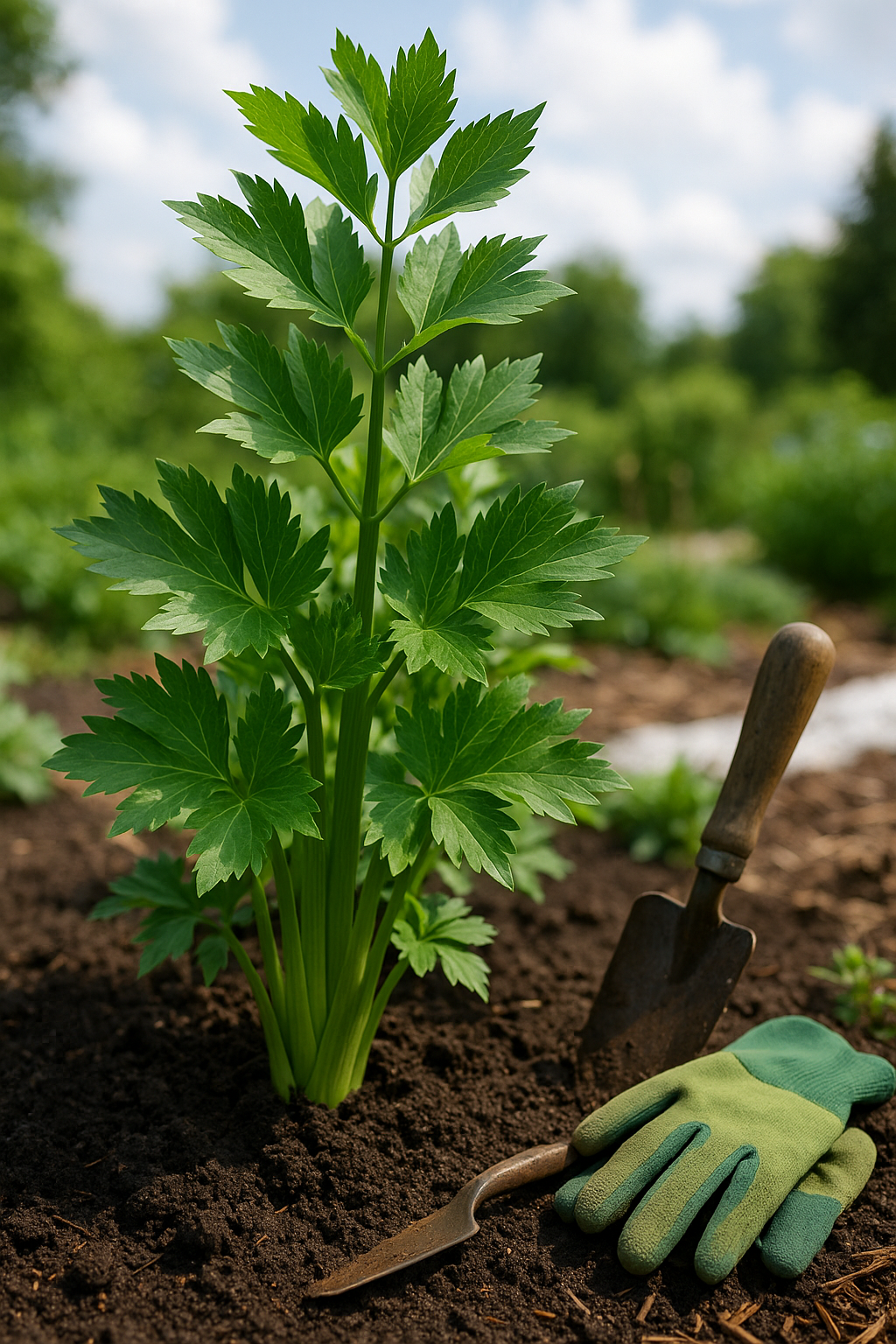Introduction
If you’re curious about the lovage growth timeline, you’re not alone—this perennial herb has been catching the eye of gardeners for generations. Known for its towering stems and celery-like flavor, lovage is prized both in culinary dishes and as a low-maintenance companion plant that attracts pollinators. Yet, many home gardeners wonder: how long does lovage actually take to grow from seedling to harvest-ready plant?
Understanding the stages of lovage growth helps you plan when to sow seeds, what care is required at each phase, and the best time to start harvesting those fragrant leaves and stems. In this post, we’ll break down the full growth timeline of lovage, share practical tips for boosting its health, and guide you through the right way to harvest so you can enjoy fresh lovage throughout the season.
Whether you’re new to perennial herbs or an experienced grower, this guide will help you make the most of your lovage patch.
Lovage Growth Timeline

Lovage is a perennial herb with a steady growth timeline that rewards a little patience and care. Starting from seed, lovage takes about two to three weeks to germinate, though this can vary depending on temperature—warmer soil (above 60°F or 16°C) encourages quicker sprouting, while cool, soggy soil slows it down.
Once seedlings appear, you’ll notice the first delicate leaves within a few days, showcasing the plant’s characteristic celery-like look. If you’re direct sowing seeds outdoors, expect the whole seed-to-harvest journey to take around 90 to 120 days.
In comparison, using the transplant method—starting seeds indoors 6-8 weeks before the last frost and then moving young plants outside—can give you a several-week head start and result in a more robust early-season plant.
Key milestones are easy to spot:
- After germination comes seedling development, where small plants grow thicker stems and true leaves (usually 4-6 weeks in).
- Rapid vegetative growth occurs in spring as roots establish.
- The first true leaves indicate your plant is on track for healthy development.
You can begin harvesting once plants reach about 12-18 inches tall, usually three to four months after seeding or transplanting. For the best flavor and regrowth, snip outer stems rather than taking the whole plant.
Keep in mind that lovage prefers rich, well-drained soil and full sun to partial shade—poor soil or lack of sunlight can delay growth, while dry spells stunt young seedlings. In cool or temperate climates, lovage thrives; excessive heat may stress the plant and slow development.
As a practical tip, mulching helps retain moisture, and moderate watering prevents root rot. With the right care, you’ll enjoy a vibrant, aromatic addition to your herb garden by mid-summer.
Planting Lovage

Lovage is a hardy perennial herb that thrives when sown with a bit of planning and care. To start seeds indoors, sow them 6-8 weeks before your area’s last expected frost. Use small pots or seed trays filled with moistened seed-starting mix, pressing seeds gently onto the surface but barely covering them—lovage needs some light to germinate. Place trays in a bright location at room temperature; seeds typically germinate in 10-20 days, though sometimes it may take a bit longer.
If you prefer direct sowing outdoors, wait until after the last frost date and prepare a sunny, well-drained spot by loosening the soil and mixing in compost for extra nutrients. Sow seeds thinly, covering them very lightly.
Once seedlings have at least two sets of true leaves and outdoor temperatures are stable, it’s time to transplant. Space plants 18-24 inches apart, as lovage grows tall and needs room to expand. Dig in some organic matter or aged manure to enrich the soil, and water well after transplanting to help roots settle in.
In early growth, expect slow but steady progress: seedlings will push up sturdy, celery-like stems with glossy, divided leaves. Keep an eye out for uneven germination—this is normal for lovage, so don’t worry if sprouts appear at different times. During this stage, keep soil moist but not waterlogged, and gently thin weaker plants to focus energy on the strongest.
In a few weeks, you’ll see your lovage developing into bushy plants, ready for a full season of growth.
Caring for Lovage Through the Seasons
Consistent care is the secret to a thriving lovage plant, and that means paying attention throughout the year.
In spring, start by choosing a spot with full sun or partial shade, and prep the soil with compost for a nutrient boost. Water young lovage regularly, keeping the soil moist but not soggy—about an inch per week is ideal, especially during dry spells.
As temperatures climb in summer, mulch around the base with straw or shredded leaves. This helps hold moisture, keeps roots cool, and suppresses weeds. Water deeply every few days if rainfall is scarce, and watch for yellowing leaves, which can signal overwatering or poor drainage. Trim back flowering stalks to encourage leaf production and prevent self-seeding if you prefer controlled growth.
Come autumn, give lovage a final tidy by cutting stems down to a few inches above the soil, and refresh the mulch layer to insulate the roots against winter cold. Remove fallen debris to minimize disease risk and—if your area experiences harsh winters—consider using a thicker mulch or covering the crown with leaves.
Following these seasonal steps not only keeps lovage lush and productive but also reduces pests, improves plant vigor, and ensures you’ll enjoy a steady harvest of aromatic leaves year after year.
Pruning and Harvesting
Knowing when and how to prune and harvest lovage can make all the difference in getting a thriving, flavorful crop all season long. Lovage plants are typically mature enough for their first harvest by late spring, around 90 days after sowing, when stems are about a foot tall and leaves look lush and healthy.
For the initial harvest, snip only a few stems and leaves from the outer edges, leaving the central growth undisturbed; this allows the plant to continue developing vigorously. To encourage continuous growth throughout summer, practice “cut and come again” harvesting—regularly pick mature outer stems and leaves while ensuring at least half the plant remains untouched. This approach keeps the plant productive and prevents it from bolting (going to seed) too early.
Pruning is also essential for longevity and bushiness: after each harvest, trim stems just above a pair of leaf nodes (where leaves join the stem) instead of cutting at soil level. This stimulates branching, creating a denser, more compact plant that resists sprawling or flopping over. If flower stalks start to form and you’re growing lovage primarily for its leaves, pinch these off promptly to redirect the plant’s energy back into leafy growth.
Regular, gentle pruning and smart harvesting not only keep your lovage healthy but also extend your harvesting window well into fall, so you can enjoy fresh, celery-flavored greens whenever you need them in the kitchen.
Potential Problems and How They Affect Growth Time
Growing lovage can be rewarding, but several potential problems may slow its progress. Pests like aphids and leaf miners often feed on young lovage leaves, stunting growth and causing curling or yellowing. Inspect your plants regularly and remove pests by hand or use insecticidal soap as a gentle remedy.
Diseases such as powdery mildew and root rot can also threaten lovage, especially in damp or poorly ventilated areas. To prevent disease, water at the soil level and ensure your plants have plenty of space for airflow.
Perhaps the most common issue is poor soil—lovage thrives in rich, well-drained earth. If your plant’s growth seems slow or stalled, check soil quality and nutrients. Amend the soil with compost and ensure a neutral to slightly alkaline pH. If you notice yellowing or lackluster foliage, consider a balanced organic fertilizer.
Sometimes, growth issues simply stem from too much shade; lovage prefers a spot with at least partial sunlight. By tackling these obstacles early—removing pests, managing disease, and providing the best soil—you can help your lovage bounce back and achieve strong, healthy growth all season long.
Tips for Faster, Healthier Lovage Growth
For faster, healthier lovage growth, start by selecting a planting spot with partial shade—lovage thrives in cool, moist soil but still needs a few hours of morning sun. Rich, well-draining soil is essential; consider mixing compost or aged manure into your bed before planting to boost nutrients.
Fertilize monthly with a balanced organic fertilizer or a diluted fish emulsion to encourage strong, leafy growth without overwhelming the plant. Lovage roots like room to spread, so space plants 18–24 inches apart and mulch around the base to retain moisture and suppress weeds.
Planting lovage alongside carrots or celery helps deter pests and maximizes garden space, while nearby flowers like marigolds can attract beneficial insects. Keep an eye out for aphids and treat infestations promptly with insecticidal soap or by spraying with a strong jet of water.
For gardeners eager to optimize their yields, soil testers and moisture meters can be handy, ensuring your lovage isn’t over- or under-watered and that the pH stays around the ideal 6.5–7.0.
Remember, lovage is a perennial, so it gets stronger each season—be patient and nurture it with steady care, and you’ll enjoy tall, vibrant plants for years to come.
